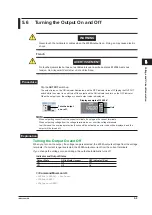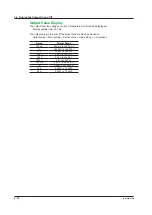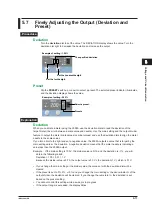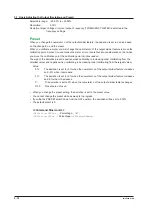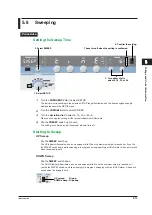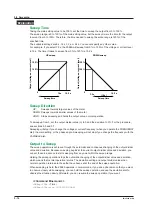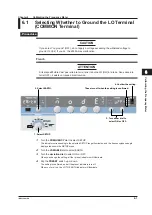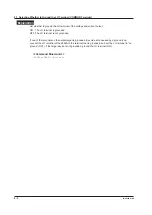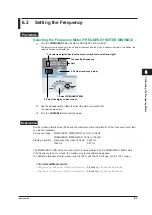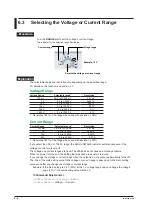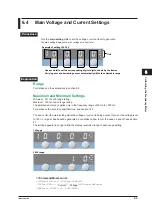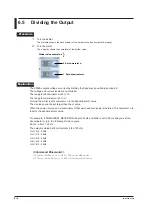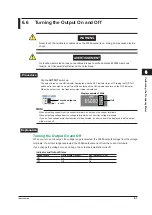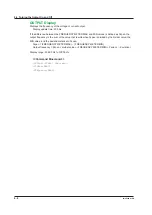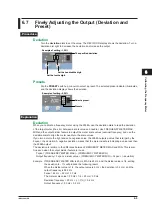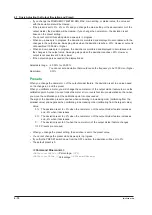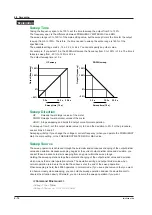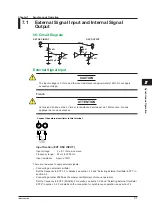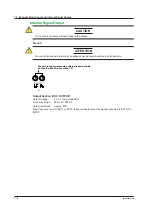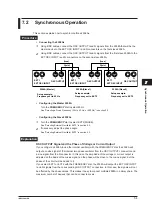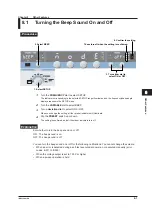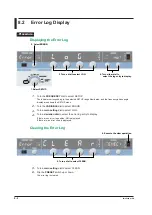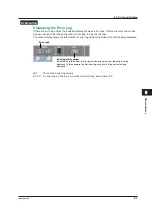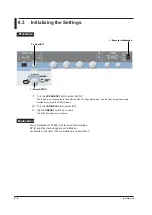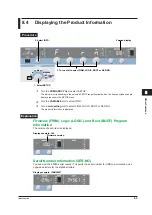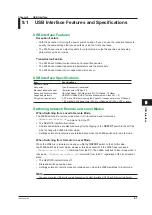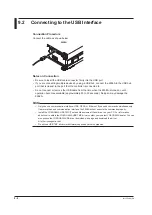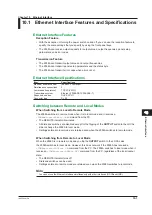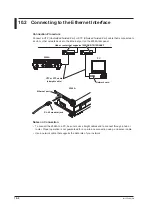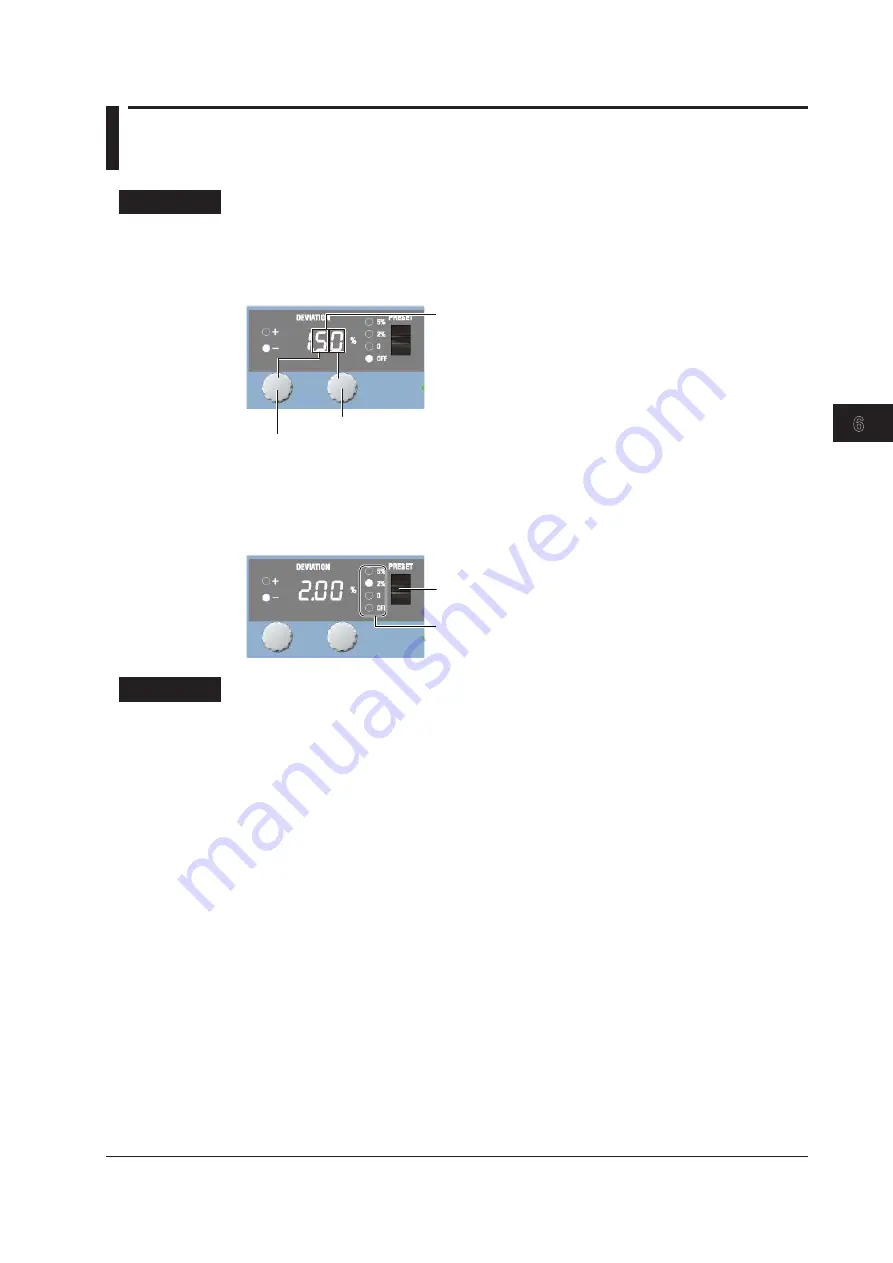
6-9
IM 2558A-01EN
Calibrating the Frequency Meter
3
2
1
4
5
6
7
8
9
10
11
12
13
14
15
16
App
Index
6.7 Finely Adjusting the Output (Deviation and
Preset)
Procedure
Deviation
Turn the
deviation
dials to set the value. The DEVIATION display shows the deviation. Turn a
deviation dial right to decrease the deviation and increase the output.
Example of setting –1.50%
The specified deviation
Set the hundredths digit.
Set the tenths digit.
Presets
Flip the
PRESET
switch up or down to select a preset. The selected preset indicator illuminates,
and the deviation display shows the deviation.
Example of setting –2.00%
Select a preset.
Presets
Explanation
Deviation
When you calibrate a frequency meter using the 2558A, use the deviation dials to read the deviation
of the target meter (the error between a scale value and needle). Use FREQUENCY METER MAX,
MIN and the output divider feature to output the meter scale values (nominal frequency) and use the
deviation dials to align the meter needle to the scale values.
If you turn a dial to the right and set a negative value, the 2558A outputs a value that is larger by the
Fspan × the deviation. A negative deviation means that the meter needle is indicating a value less than
the 2558A output.
The deviation is relative to the difference between FREQUENCY METER MAX and MIN. This is also
true even when the output divider feature is in use.
Fspan = (FREQUENCY METER MAX) – (FREQUENCY METER MIN)
Output frequency = Fspan × divider value + (FREQUENCY METER MIN) + Fspan × (–deviation)
Example If FREQUENCY METER MIN is 45 Hz, MAX is 65 Hz, and the divider value is 1/4, setting
the deviation to –1% will produce the following result.
When the divider value is 1/4, the output value is 5 Hz + the deviation (+0.2 Hz), and the
output frequency is 50.2 Hz.
Fspan = 65 Hz – 45 Hz = 20 Hz
The meter scale value = 20 Hz × 1/4 + 45 Hz = 50 Hz
Deviation frequency = 20 Hz × (–(–1%)) = 0.2 Hz
Output frequency = 50 Hz + 0.2 Hz

